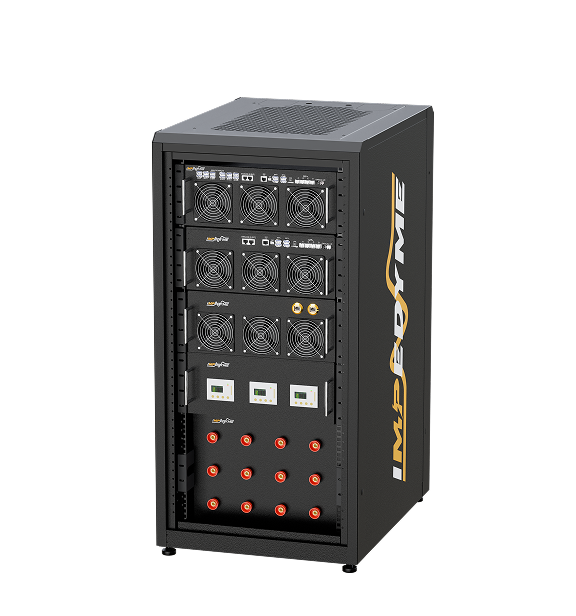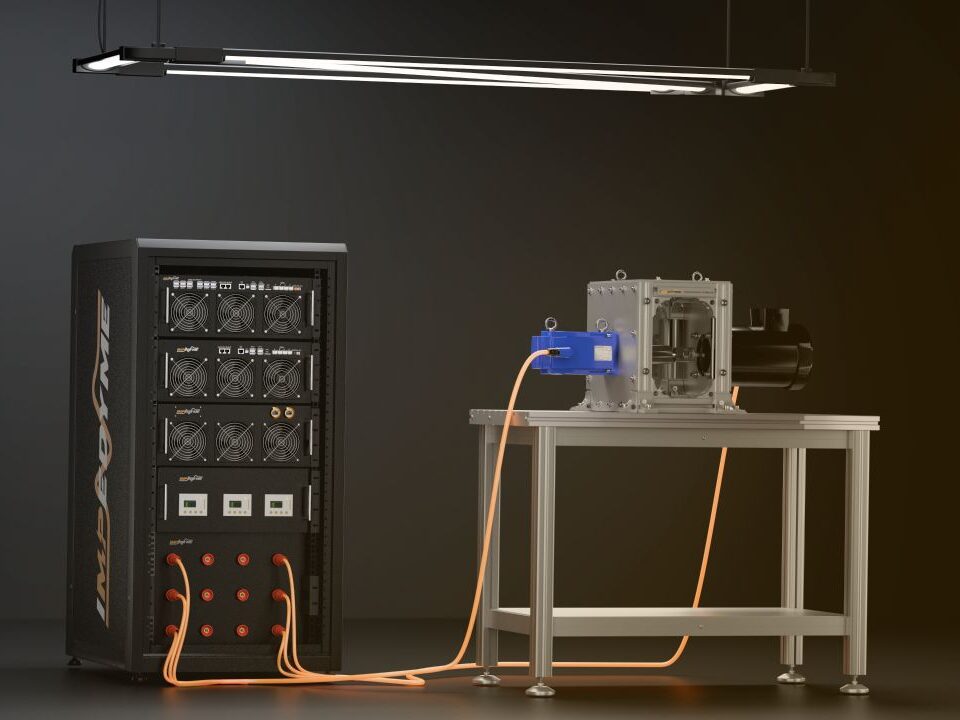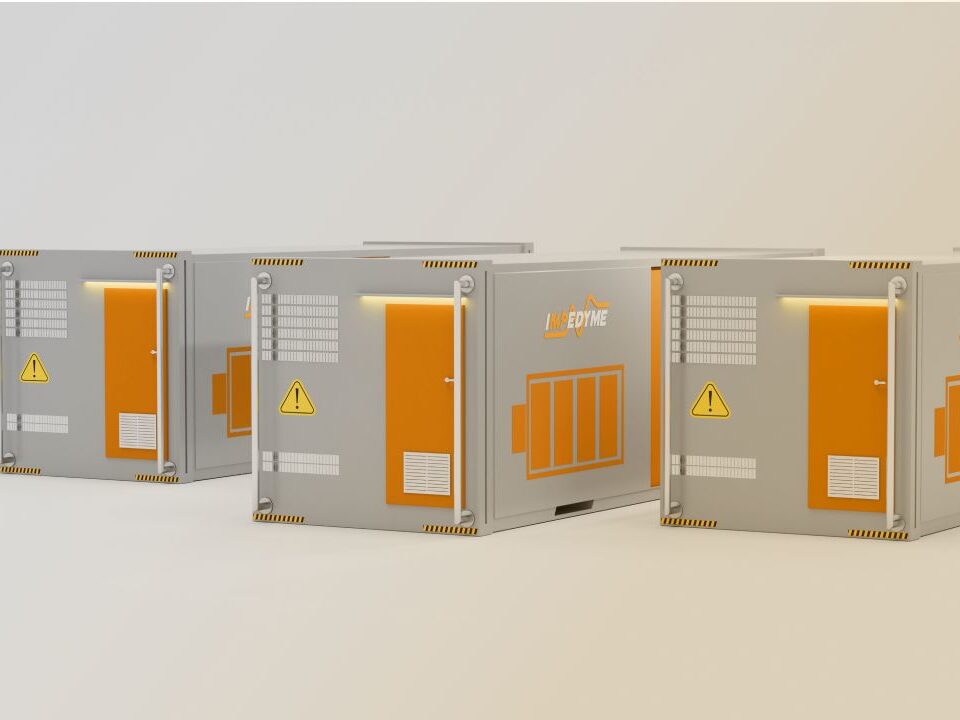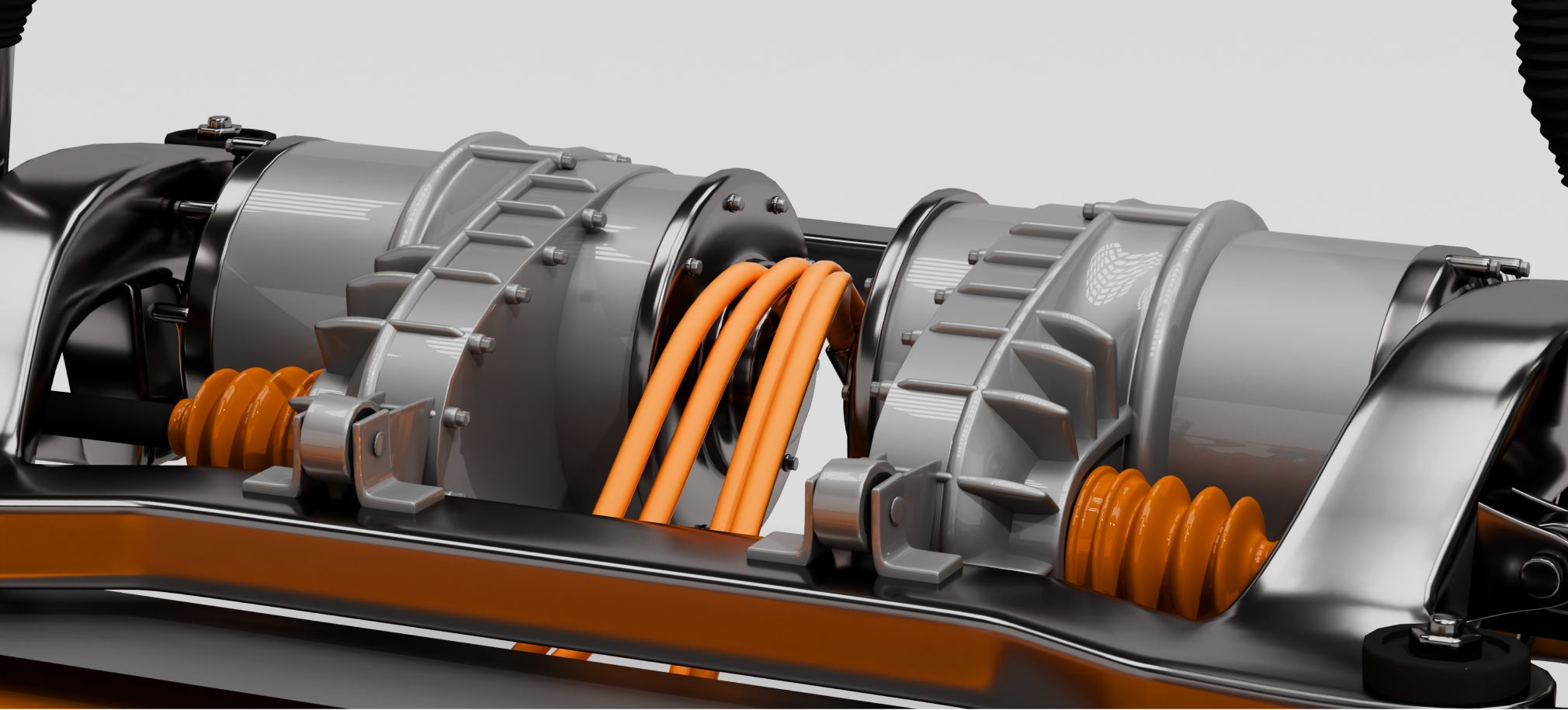
-
 Induction Motor
Induction Motor
-
 Automotive Electrical System Simulation
Automotive Electrical System Simulation
-
 DC/DC Bidirectional Converter
DC/DC Bidirectional Converter
-
 PWM Control for Brushless DC
PWM Control for Brushless DC
-
 BLDC Motor Control and Drive Simulation
BLDC Motor Control and Drive Simulation
-
 Electric Vehicle Fast Charger Simulation
Electric Vehicle Fast Charger Simulation
-
 DFIG Wind Turbine Simulation
DFIG Wind Turbine Simulation
-
 Dual Active Bridge
Dual Active Bridge
-
 EV Dynamometer Test Environment Simulation
EV Dynamometer Test Environment Simulation
-
 Electric Vehicle Simulation
Electric Vehicle Simulation
-
 Three-Phase Grid-Connected Inverter Using Direct-Q…
Three-Phase Grid-Connected Inverter Using Direct-Q…
-
 Three-Phase Grid-Connected Solar Photovoltaic
Three-Phase Grid-Connected Solar Photovoltaic
-
 Grid-Connected Rectifier
Grid-Connected Rectifier
-
 Grid-Tied Inverter System
Grid-Tied Inverter System
-
 Torque Control in a Hybrid Excitation Synchronous …
Torque Control in a Hybrid Excitation Synchronous …
-
 Wye-Delta Starting Circuit
Wye-Delta Starting Circuit
-
 IPMSM-Based Axle-Drive
IPMSM-Based Axle-Drive
-
 Simplified Parallel Hybrid Electric Vehicle
Simplified Parallel Hybrid Electric Vehicle
-
 Simplified Series Hybrid Electric Vehicle
Simplified Series Hybrid Electric Vehicle
-
 Series-Parallel Hybrid Electric Vehicle
Series-Parallel Hybrid Electric Vehicle
-
 Three-Phase Matrix Converter Simulation
Three-Phase Matrix Converter Simulation
-
 Venturini Modulation for Three-Phase Matrix Conver…
Venturini Modulation for Three-Phase Matrix Conver…
-
 Microgrid Frequency Regulation Using Vehicle-to-Gr…
Microgrid Frequency Regulation Using Vehicle-to-Gr…
-
 Three-Phase Modular Multilevel Converter
Three-Phase Modular Multilevel Converter
-
 Field-Oriented Control
Field-Oriented Control
-
 Interior Permanent Magnet Synchronous Generator
Interior Permanent Magnet Synchronous Generator
-
 Permanent Magnet Synchronous Machine
Permanent Magnet Synchronous Machine
-
 PMSM Rotor Angular Velocity
PMSM Rotor Angular Velocity
-
 PMSM-Based Electrical Traction Drive
PMSM-Based Electrical Traction Drive
-
 Maximum Power Point Tracking
Maximum Power Point Tracking
-
 Six-Phase Permanent Magnet Synchronous Machine
Six-Phase Permanent Magnet Synchronous Machine
-
 Synchronous Machine-Based Electrical Drive Simulat…
Synchronous Machine-Based Electrical Drive Simulat…
-
 Single-Stage Solar Inverter
Single-Stage Solar Inverter
-
 Three-Phase Cycloconverter Simulation
Three-Phase Cycloconverter Simulation
-
 Totem-Pole PFC Simulation
Totem-Pole PFC Simulation
-
 Twelve-Pulse Thyristor Rectifier
Twelve-Pulse Thyristor Rectifier
-
 Two-Wheeler On-Board Charger
Two-Wheeler On-Board Charger
-
 Vienna Rectifier Simulation
Vienna Rectifier Simulation
-
 High-Voltage Direct Current
High-Voltage Direct Current
-
 Wireless Power Transfer
Wireless Power Transfer
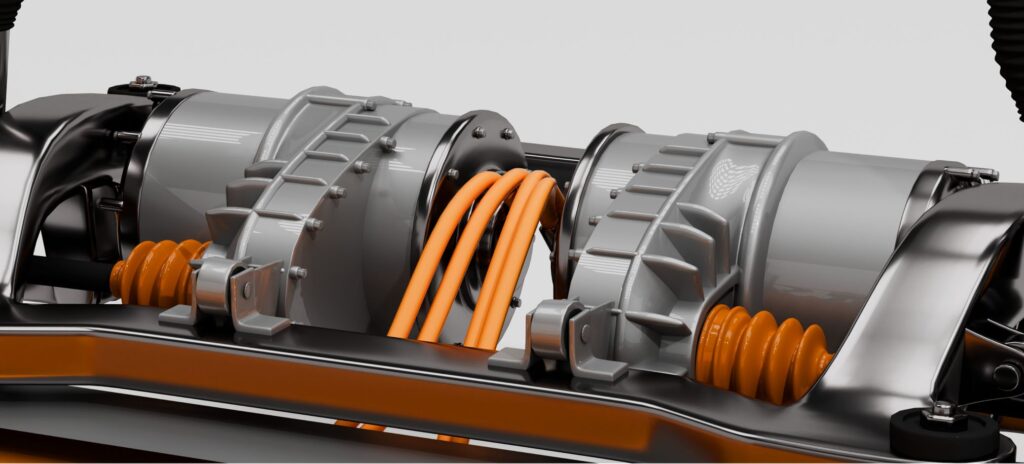
Comprehensive Documentation for BLDC Motor Control and Drive Simulation
Table of Contents
- 1 Comprehensive Documentation for BLDC Motor Control and Drive Simulation
- 1.1 Introduction
- 1.2 System Overview
- 1.2.1 What is BLDC Motor Control and Drive?
- 1.2.2 Purpose of the Simulation
- 1.3 Key Features
- 1.3.1 Precise Speed and Torque Control
- 1.3.2 Sensor-Based and Sensor less Commutation
- 1.3.3 Efficient Inverter Switching Control
- 1.3.4 Performance Optimization
- 1.3.5 Cost Savings
- 1.4 Simulation Objectives
- 1.5 Technical Description
- 1.5.1 System Configuration
- 1.5.2 Control Methodology
- 1.6 Advantages of BLDC Motor Control
- 1.7 Applications
- 1.7.1 Automotive Industry
- 1.7.2 Industrial Automation
- 1.7.3 Aerospace and Defense
- 1.7.4 Consumer Electronics
- 1.7.5 Medical Equipment
- 1.8 Simulation Benefits
- 1.9 Summary
- 1.10 Future Enhancements
- 1.10.1 Induction Motor
- 1.10.2 Automotive Electrical System Simulation
- 1.10.3 DC/DC Bidirectional Converter
- 1.10.4 PWM Control for Brushless DC
Introduction
Brushless DC (BLDC) motors are widely used in various applications due to their high efficiency, reliability, and precise speed control capabilities. This project focuses on modeling and simulating a BLDC motor-based electrical drive system, incorporating speed control, DC-link voltage regulation, and inverter switching techniques. By implementing advanced control strategies, the simulation provides insights into motor behavior under different operating conditions.

System Overview
What is BLDC Motor Control and Drive?
A BLDC motor drive consists of a power converter (inverter), motor controller, and feedback sensors to achieve smooth commutation and precise speed control. The motor operates using electronically controlled commutation instead of mechanical brushes, making it more efficient and durable.
Purpose of the Simulation
The simulation aims to:
- Analyze motor performance under various speed and load conditions.
- Optimize torque control through intelligent modulation techniques.
- Evaluate inverter switching and commutation strategies.
Key Features
Precise Speed and Torque Control
Advanced speed control techniques ensure stable motor operation across different load conditions. ➡️ HIL/PHIL Benefit: Enables real-time validation of speed control strategies in a hardware-in-the-loop setup.
Sensor-Based and Sensor less Commutation
Supports both Hall-effect sensor-based commutation and sensorless control using back-EMF detection. ➡️ HIL/PHIL Benefit: Provides a testing environment for different commutation techniques before deployment.
Efficient Inverter Switching Control
Uses PWM techniques such as sinusoidal PWM (SPWM) and Space Vector PWM (SVPWM) for smooth switching. ➡️ HIL/PHIL Benefit: Allows optimization of inverter control strategies in real-time scenarios.
Performance Optimization
Simulations help optimize motor performance, control algorithms, and system integration, ensuring efficient and reliable operation.
Cost Savings
By identifying potential issues early in the design phase, simulations reduce the cost of prototyping and testing.
Faster Time-to-Market
Simulations accelerate the development process, enabling faster product launches.
Simulation Objectives
This simulation helps evaluate:
- Efficiency of speed and torque control methods.
- Impact of inverter switching on motor performance.
- Response of the motor under transient and steady-state conditions. ➡️ HIL/PHIL Benefit: Enables accurate real-world testing before hardware implementation.
Technical Description
System Configuration
- Input: DC power supply with regulated DC-link voltage.
- Output: Three-phase BLDC motor drive.
- Power Stage: MOSFET/IGBT-based inverter with microcontroller-based control.
Control Methodology
- Modulation Techniques: Trapezoidal PWM, Sinusoidal PWM (SPWM), and Space Vector PWM (SVPWM).
- Control Algorithms: PID, Field-Oriented Control (FOC), and Direct Torque Control (DTC).
- Commutation Strategies: Sensor-based (Hall-effect sensors) and Sensorless (Back-EMF detection). ➡️ HIL/PHIL Benefit: Enables real-time evaluation of different control strategies.
Advantages of BLDC Motor Control
- Higher Efficiency: Reduced losses compared to brushed motors.
- Longer Lifespan: No brushes lead to lower wear and maintenance.
- Smooth Commutation: Advanced control techniques reduce torque ripple. ➡️ HIL/PHIL Benefit: Provides an environment for fine-tuning motor control algorithms before hardware deployment.
Applications
Automotive Industry
Electric Vehicles (EVs): PWM control is used to regulate the speed and torque of BLDC motors in EVs, ensuring efficient and smooth operation.
Electric Power Steering (EPS): BLDC motors with PWM control provide precise and responsive steering assistance, improving vehicle handling and safety.
HVAC Systems: PWM-controlled BLDC motors are used in automotive heating, ventilation, and air conditioning systems for efficient airflow control.
Industrial Automation
Robotics: PWM control enables precise motion control in robotic arms, conveyors, and automated guided vehicles (AGVs), enhancing productivity and accuracy.
CNC Machines: BLDC motors with PWM control are used in computer numerical control (CNC) machines for precise speed and position control in machining operations.
Pumps and Compressors: PWM-controlled BLDC motors improve energy efficiency and performance in industrial pumps and compressors.
Aerospace and Defense
Aircraft Actuators: PWM control is used in BLDC motors for flight control surfaces, landing gear, and other actuators, ensuring reliable and precise operation.
Drones and UAVs: BLDC motors with PWM control provide efficient and stable propulsion for drones and unmanned aerial vehicles (UAVs).
Military Vehicles: PWM-controlled BLDC motors are used in electric and hybrid military vehicles for propulsion and auxiliary systems.
Consumer Electronics
Home Appliances: PWM control is used in BLDC motors for washing machines, refrigerators, and vacuum cleaners, improving energy efficiency and performance.
Cooling Fans: BLDC motors with PWM control are used in computer cooling fans, air purifiers, and HVAC systems for quiet and efficient operation.
Medical Equipment
Surgical Tools: PWM-controlled BLDC motors provide precise and reliable operation in surgical drills, pumps, and other medical devices.
Imaging Systems: BLDC motors are used in medical imaging systems like MRI and CT scanners for accurate and smooth motion control.
Renewable Energy Systems
Wind Turbines: PWM control is used in BLDC motors for pitch control and yaw systems in wind turbines, optimizing energy capture and efficiency.
Solar Tracking Systems: BLDC motors with PWM control enable precise positioning of solar panels, maximizing energy generation.
Simulation Benefits
With this simulation, users can:
- Analyze motor dynamics and performance.
- Optimize control strategies for improved efficiency.
Evaluate inverter switching and commutation techniques. ➡️ HIL/PHIL Benefit: Ensures a seamless transition from simulation to hardware testing.
Summary
The BLDC Motor Control and Drive Simulation provides a detailed framework for studying motor control techniques, inverter switching, and torque optimization. Impedyme’s HIL and PHIL solutions enhance the development process:
| Development Stage | Impedyme’s Contribution |
|---|---|
| Control Design | RCP using HIL for rapid algorithm validation |
| Control Hardware Testing | CIL with real-time BLDC motor models |
| Power Stage Verification | PHIL with real voltage and power interaction |
| Final Validation | Full-system PHIL under realistic load conditions |
Future Enhancements
- Integration of AI-based adaptive motor control.
- Optimization of sensorless techniques for high-speed applications.
- Advanced fault detection and self-correction mechanisms.
The BLDC Motor Control and Drive Simulation serves as a vital tool for developing next-generation motor control systems. With Impedyme’s HIL/PHIL solutions, engineers can optimize motor efficiency, enhance performance, and validate advanced control strategies before real-world deployment.
